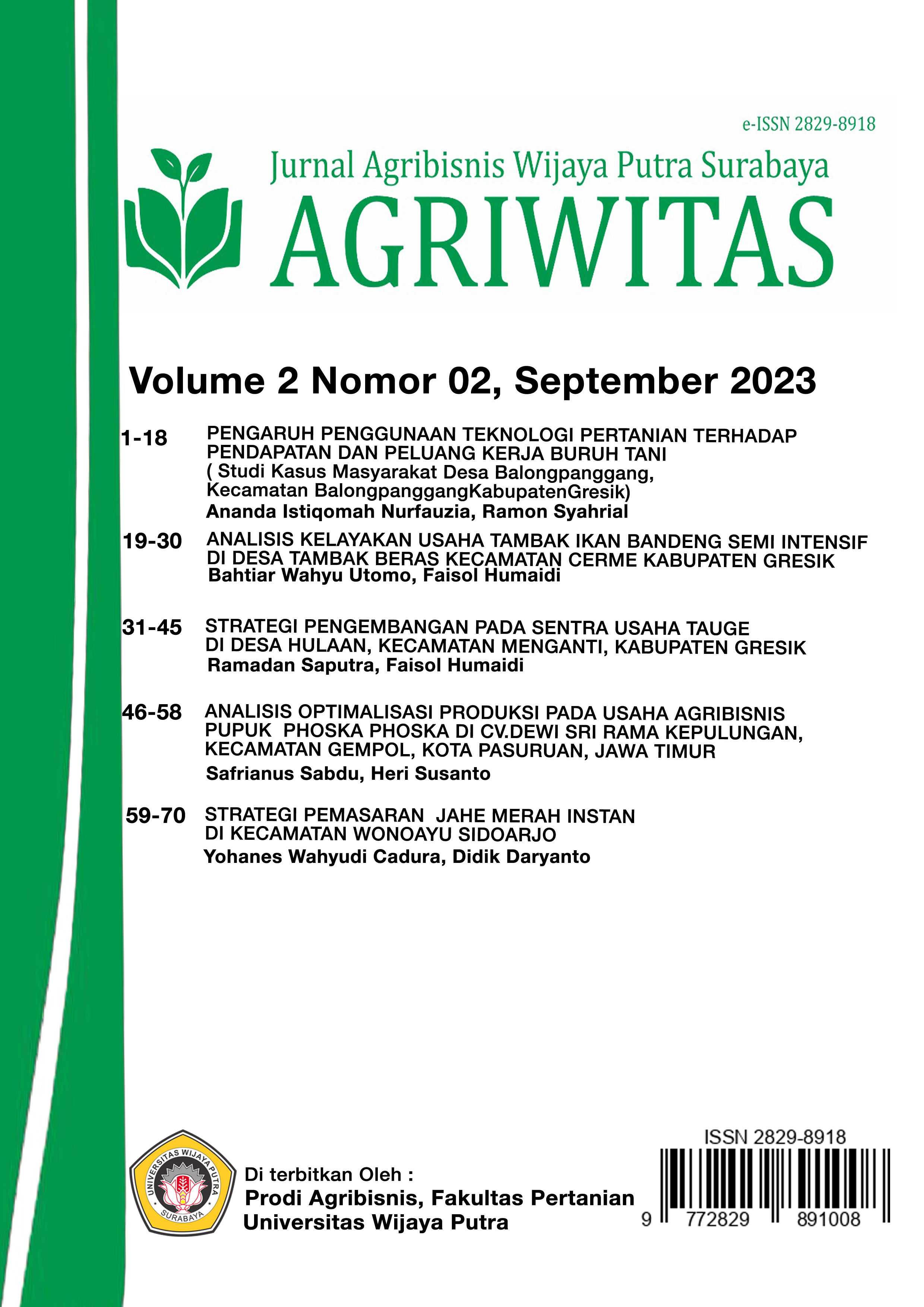FEASIBILITY ANALYSIS OF SEMI-INTENSIVE MILK FISH TAMBAK BUSINESS IN TAMBAK BERAS VILLAGE, CERME DISTRICT, GRESIK DISTRICT
Abstract
Public awareness of the importance of consuming healthy and nutritious animal protein has encouraged an increase in national fish consumption of 50 kg/capita/year. Availability of food plays an important role in fulfilling sufficien energy and calories to increase productivity. Gresik is the only district in East Java that has been designated as a pilot for the development of aquaculture through the aquaculture industrialization program with the main commodities being milkfish and shrimp. The total area of fish farming ponds in Gresik Regency is 32.00 Ha. This study aims to determine the constraints faced by pond farmers, analyze fish pond business income, and analyze the feasibility of fish pond business. This research is a case study in Tambak Beras Village, Cerme District, Gresik Regency. The number of samples considered sufficient to represent the entire population, namely at least 10%. Data collection was carried out by interviewing or direct interviews with fish pond farmers. Data analysis used is qualitative and quantitative data consisting of total costs, income analysis, Revenue Cost Ratio analysis, Benevit Cost Ratio analysis, Break Event Point (BEP). The average income of milkfish pond farming is Rp. 14,527,690. Analysis of the feasibility of milkfish pond business showed an R/C ratio of 1.51, a B/C ratio of 1.18, a production BEP of 8.22














